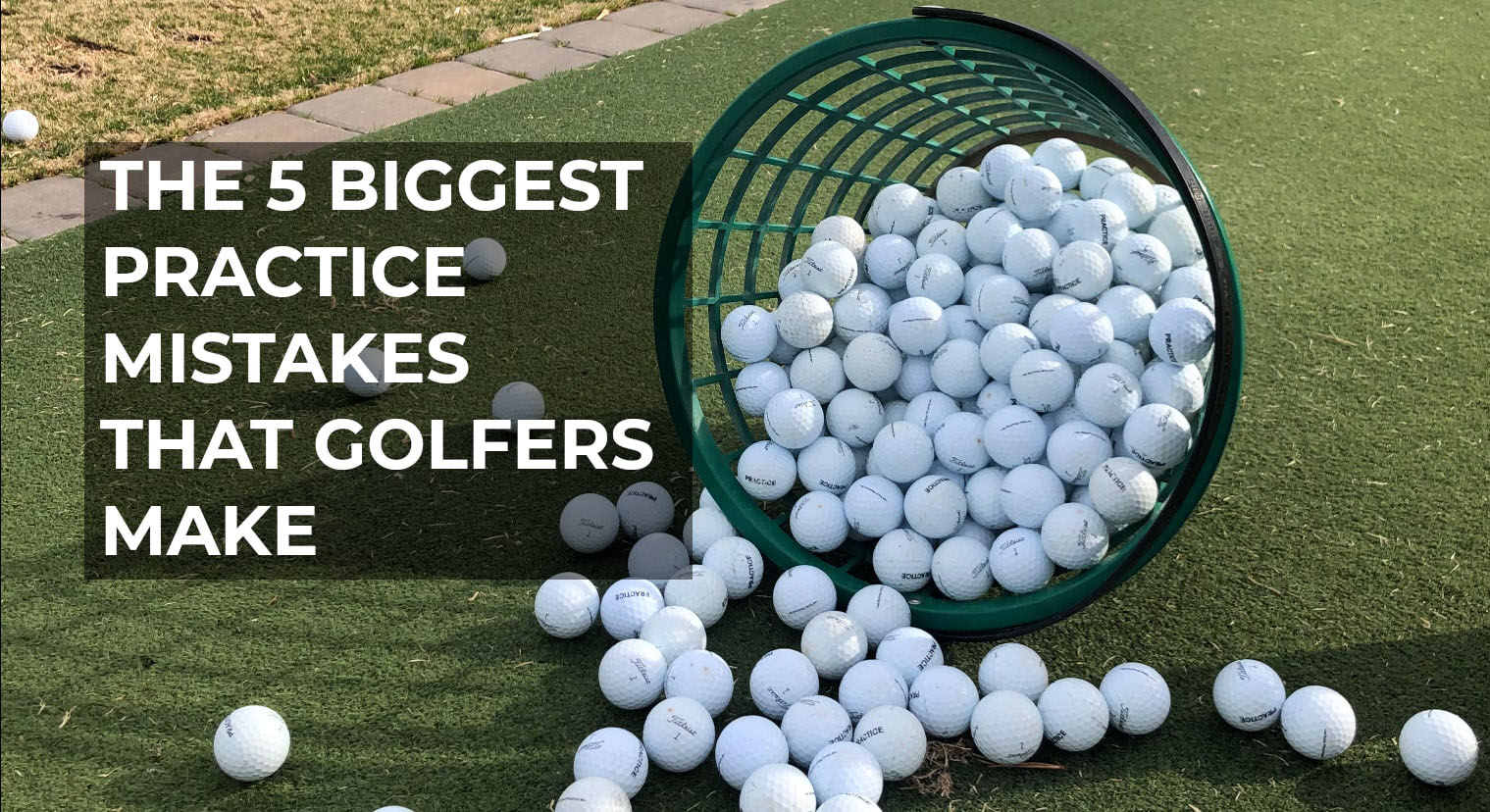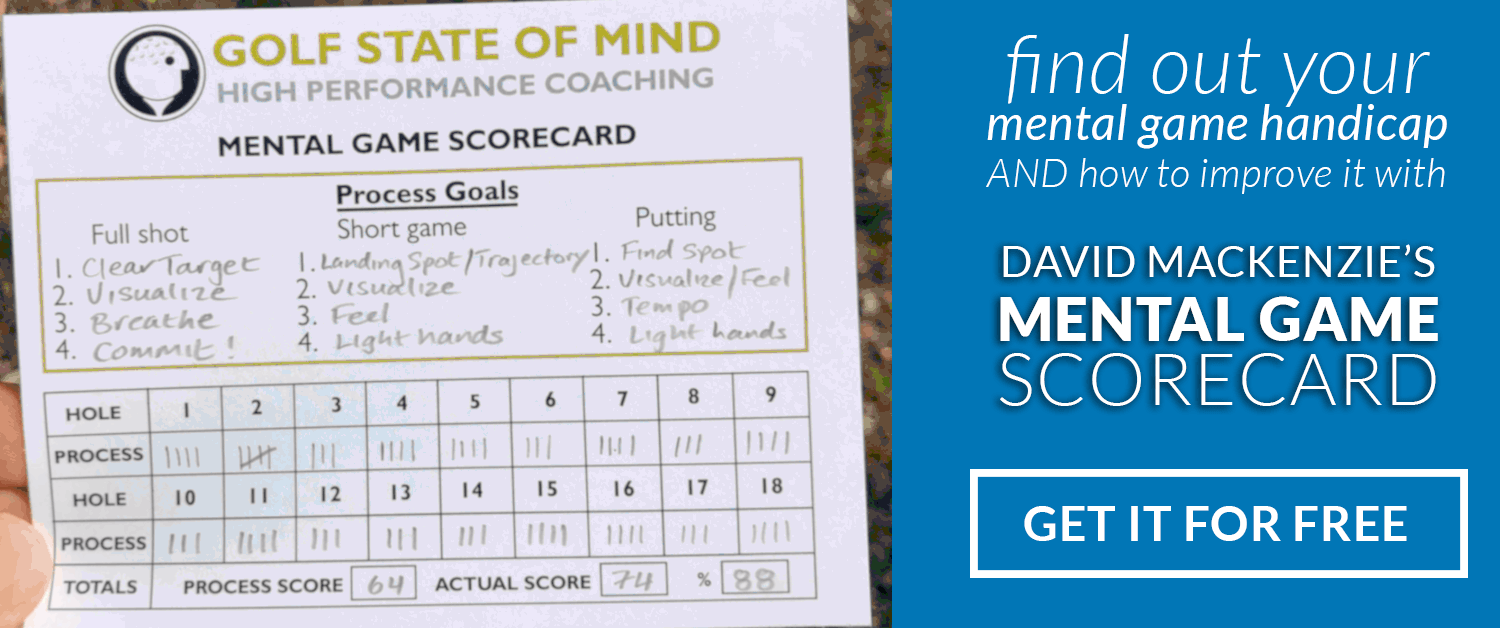
The 5 Biggest Practice Mistakes That Golfers Make
If you really want to become as good as you can be, it goes without saying that you need to spend time practicing effectively so that you increase your “performance skills” which will lead to lower scores on the golf course.
Unfortunately, very few golfers do this successfully, which means they remain stagnant in their skill level and waste time in the process. Think about this:
The average handicap of 16 has not fallen in the past 50 years
This is difficult to comprehend when you think about how much equipment and swing coaching technology has evolved in that time. The reason, I believe, is because golfers go about their game improvement inefficiently, repeatedly making these 5 Practice mistakes:
5 Practice Mistakes That Golfers Make
Practice Mistake 1: Thinking that more balls leads to more change in skill
The first practice mistake is thinking that repeating a movement over and over again will make it permanent. Research shows that repetition is not as effective as variability and challenge in creating a permanent change in skills. Beating balls doesn’t challenge the brain enough to cause it to do anything differently and has limited effect in changing motor patterns. It’s not about training the muscles (muscles have no “memory”), rather it’s challenging and training the brain which creates the changes in movement. Timothy Lee and Richard Schmidt suggest in their research paper “PaR (Plan-act-Review) Golf: Motor Learning Research and Improving Golf Skills” that 20 balls in 20 minutes (a different shot with each ball) makes practice more “deliberate” and allows the golfer more time to plan and review each shot (which is plays a more important role in learning that the act of making the swing).
Practice Mistake 2: Lots of good shots in practice is a sign of improvement
Although the golfer starts hitting the ball better with repetition, it doesn’t necessarily mean that they are improving or making swing changes permanent. What’s most likely happening is the execution of their shots is benefiting from repetition – they get a sense of the timing required to square the club at impact and they make slight subconscious adjustments (based on sensory feedback) during each new rep. They are using their short-term memory, which they don’t have the benefit of on the course. But because they are getting the outcome they want to see, they keep going with it over and over again, thinking that repeating the action will make it stick. Unfortunately, very little change in skill is occurring. This is the very reason that I get asked the question: “Why can’t I take my range game to the golf course?”, so often. Hitting the ball well on the driving range is fairly easy for any level of player with enough repetition, but when that golfer has to hit one shot every few minutes on the course, their real skills are exposed and the swing they had on the range is nowhere to be found.
Practice Mistake 3: Practice should be enjoyable
There’s an appeal to the ego of hitting one good shot after another, which can explain why you might continue doing it. If enjoying your time spent practicing is what your goal is, then great, but if developing your skills and playing better is the goal then you might need to rethink your approach. Practice needs to be harder than the game to make positive changes in your play.
Practice Mistake 4: Technical skills are the same as performance skills
The average golfer goes to practice to improve their technique. I’ve worked with enough players over the years to know this to be true, even at the highest level. Even though the focus needed to make real change in the swing diminishes with each repetition, the player is usually focusing on their body or a feeling during each repetition. Without knowing it, the golfer is training their attention in a way which is not how they would want to focus on the golf course. On the golf course, it’s not about making swing after swing, focusing on technique – it’s about solving a unique problem each time and letting the intention for the shot create the swing. Unless we train ourselves (in practice) to prepare for each new challenge, we are not developing the performance skills needed to play better on the course.
Practice Mistake 5: Practice and playing are two different things
Most golfers see their practice time as something unrelated to playing on the golf course. There’s no overlap, or similarity of conditions, between the two environments. To make real change in skills (technical and mental) requires simulation (and training) of the external and internal variability that we feel on the golf course due to having different shots and consequences for the outcome of those shots.
If you are making any of these 5 Practice Mistakes and you’d like to learn how to make your practice sessions more effective, please check out my practice plans for golf along with over 70 random and competitive practice drills in the Golf State of Mind Practice System.


